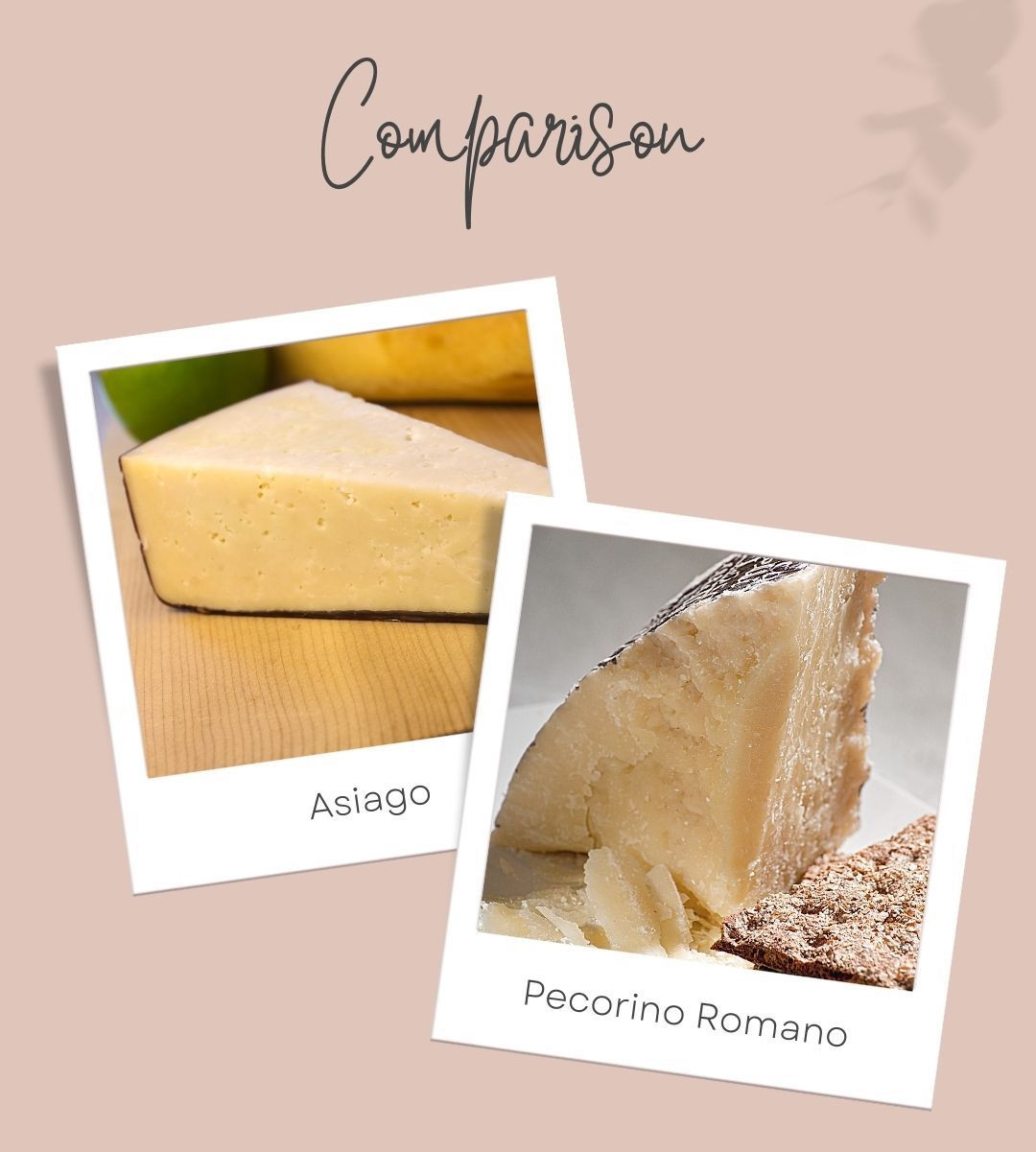Last Updated on November 5, 2022 by Aaron
When it comes to cheese, there are seemingly endless options to choose from.
Two such cheeses are Asiago and Pecorino Romano. Though they share some similarities, there are also several key distinctions between them.
In this article, we will explore those differences in depth. So, what’s the difference between Asiago and Pecorino Romano? Let’s find out!
Table of Contents
The Key Points
- Asiago and Pecorino Romano are both types of hard and aged cheese from Italy. but they have different flavors, production, and uses.
- Asiago is a type of Italian cow’s milk cheese that has a nutty flavor and a crumbly texture. Pecorino is an Italian sheep’s milk cheese, but it has a sharper, saltier flavor and a harder texture.
- They’re both similar in color – usually brownish to ivory, Pecorino is slightly darker. Asiago is aged for at least two months, while Pecorino is aged for at least 5 months.
- Asiago has a wide range of uses, while Pecorino is best suited to grating.
The Confusion – Romano or Pecorino Romano
Pecorino or the full name Pecorino Romano is a variety of Romano cheese. It has a PDO status and is the most popular type of Romano cheese.
Therefore you may see that term abbreviated as “Romano” in the United States and Canada, it’s important to note that the correct term is Pecorino Romano.
Pecorino means “sheep” in Italian, there are other romano cheeses that are made from goat’s and cow’s milk as well.
Are Asiago and Pecorino Romano the same?
Though Asiago and Pecorino Romano are both hard, aged cheeses from Italy, they have some distinct differences and are not the same. These two cheeses have different flavors, appearance, history, production, uses, and more. We will discuss more below.
Flavor Profile and Feature
Asiago is a cow’s milk cheese with a nutty flavor and crumbly texture. A little softer – can be considered semi-hard to hard depending on age. Pecorino Romano is made exclusively from sheep’s milk, and it has a sharper, saltier flavor and harder texture than Asiago. Similar to Parmesan, but stronger overall.
They also have similar colors – Asiago is usually brownish to ivory while Pecorino Romano is slightly darker. Lastly, Asiago is typically aged for at least two months while Pecorino Romano is aged for at least five months.
The History and Origin
Both Asiago and Pecorino Romano are Italian cheeses, but their origins differ. Asiago is from the Veneto region of northeastern Italy, while Pecorino Romano comes from the Lazio region in central Italy.
Production
Asiago is made from raw cow’s milk, while Pecorino Romano is made from raw or more often thermized sheep’s milk – a sub-pasteurization sanitizing method. The production is somewhat similar, but Asiago Pressato involved hydraulic pressing the curds for a few hours, see how asiago is made. Pecorino Romano uses a dry-salting technique rather than the brine method, as in asiago.
Uses and Pairings
Asiago and Pecorino Romano are both melt-able cheese, but Asiago melts better and easier.
For that reason, Asiago is quite versatile to use in pasta dishes, soups, salads, and sandwiches. It’s best paired with red wine or a beer, read asiago wine pairing. Pecorino Romano is typically grated over food as a finishing touch – it pairs well with seafood, vegetables, and fruit desserts. Pecorino Romano is also wonderful with pasta dishes – similar to parmesan.
Nutrition
Both Asiago and Pecorino Romano are high in calcium, protein, and fat, but Pecorino Romano has more sodium than Asiago – which translates saltier.
The Price
Asiago cheese tends to be less expensive than Pecorino Romano. You can find Asiago cheese made in the United States, which is much cheaper than the imported Italian Asiago.
Pecorino Romano is imported in the United States and it tends to be more expensive. Locatelli Pecorino Romano is a popular brand, you can get it for about $18-20 per pound at Amazon, like this one here.
The Verdict
Though both cheeses are great for melting and grating, Asiago’s nuttier flavor and crumblier texture make it the better choice for general use. Pecorino Romano is better suited for finishing dishes or pairing with pasta and seafood or to substitute parmesan.
Reference:

